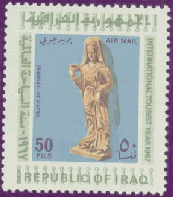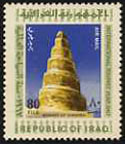

The capital of the first Arab Kingdom, with its high, thick walls and towers, Hatra withstood invasions by the Romans in A.D. 116 and 198.
Dating from the 3rd millennium BC, the ancient city of Ashur is located on the Tigris River in northern Mesopotamia. From the 14th to the 9th centuries BC it was the first capital of the Assyrian Empire. It also served as the religious capital of the Assyrians, associated with the god Ashur. The city was destroyed by the Babylonians, but revived during the Parthian period in the 1st and 2nd centuries AD.

A fortified settlement on top of an imposing tell. Erbil corresponds to ancient Arbela, an important Assyrian political and religious center.
The area lies in the joint delta of the Tigris and Euphrates River. In addition to being a refuge for biodiversity, the marshy delta contains the relict landscape of the Mesopotamian cities that were home to the early Sumerian civilization.
It consists of 7 locations: three archaeological sites (Ur, Uruk and Tell Eridu) and four wetland marsh areas. The latter are the Huwaizah Marshes, Central Marshes, East Hammar and West Hammar Marshes - important for bird migration and fish species.
The ruins of the city which was the capital of the Neo-Babylonian Empire between 626 and 539 BC.
Lynn Salmon <>{
Last Updated: November 2, 2019